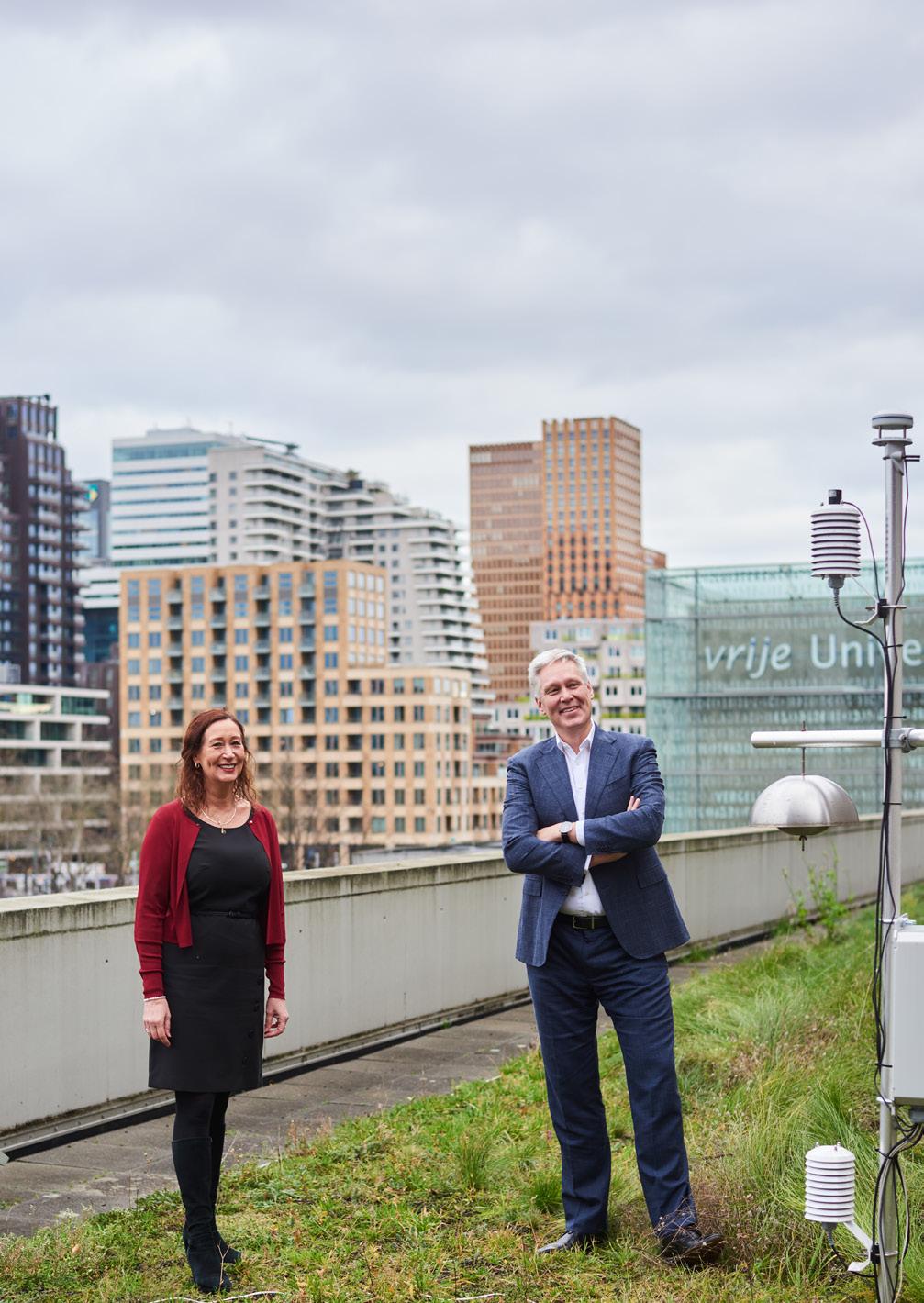
4 minute read
City of Amsterdam
Amsterdam sustainability agenda: WHAT CAN
JOSJA VAN DER VEER, DIRECTOR OF PLANNING AND SUSTAINABILITY AT THE CITY OF AMSTERDAM & FRANK TAZELAAR, HEAD OF SUSTAINABILITY AT THE CITY OF AMSTERDAM
Advertisement
The City of Amsterdam is seeking to conserve energy, generate only green energy and reuse all resources and materials in a circular chain. To do that, the city council has framed clear ambitions. It aims to reduce CO2 emissions by 55% in 2030 and by 95% in 2050. Before 2040, the city intends to be off natural gas, and in ten years’ time all road and water traffic will be emissions-free. By 2050, Amsterdam will be a circular city where everything that’s produced and consumed is renewable. It will also be equipped to deal with the impacts of climate change, including flooding, increased droughts and heat, and changes in biodiversity. Hello Zuidas met up with Josja van de Veer, former director of Corporate Real Estate and Facilities at VU Amsterdam and current director of Planning and Sustainability at the City of Amsterdam, and with Frank Tazelaar, head of Sustainability at the City of Amsterdam. WE EXPECT?
Josja and Frank, what tasks lie ahead for the city in terms of its sustainability objectives? Frank: ‘If you look at the major transitions we’re tackling within the City of Amsterdam, you’re talking a green blue city powered by 100% green energy and the major transition to a circular economy. These are challenges facing almost all urban areas, because they’re responsible for 70% of the sum total of emissions. Sustainability is a very concrete issue in cities and one where you can make a real difference.’ Josja: ‘A green blue city means a city that’s green and healthy. In the Gershwin neighbourhood in Zuidas you can see it clearly, and around De Boelelaan there’s also a lot of water storage and green public space. That in turn has a positive effect on the climate. There’s an incredible amount of knowledge within the City of Amsterdam and, to me, this is an opportunity to create even better access to that, also in collaboration with commercial operators and stakeholders in Zuidas.’
Sustainability also ties in with the city’s departments of Mobility and Public Space, Housing, and Economic Services. To what degree are sustainability efforts being coordinated? Josja: ‘The city is engaging with all residents and stakeholders to develop a vision for the local environment that fits in with the Environment and Planning Act. That’s a new law that replaces all the old planning and environmental requirements. It’s premised on all citizens having the same level of information and having a say in the city’s future. To guide that process, our job as the city government is to set out a vision. This vision, which covers the period to 2050, is specifically metropolitan rather than local in scope, since that’s the only way we can solve and get to work on issues fast. Within the metro region, we want to relieve the city centre and get more of a distribution towards, for instance, Zuidas. Extending the North-South metro line is part of that, freeing up space in the railway tunnel so more intercity trains can run at the national level.’ Frank: ‘We want to make the city radically greener. So, instead of designing first and then looking if there’s space left for planting, you flip it around and start at the other end. This factors in lowtraffic zones, more electric mobility and more room for bicycles and pedestrians. Another key objective is an inclusive city in which everyone has equal opportunities to live, work, get an education and get around, and the way to do that is by mixing residential and other uses. The vision will be made public shortly so people – including in Zuidas – can have a chance to respond.’
Why are we here on VU’s green roof? Josja: ‘To me, this spot stands for connection. I worked here a long time, of course, but also the connection to the young generation. There are 25,000 students walking around here and we’re working on sustainability for this generation and their children. If we don’t do this right now, it will literally be too late. I feel that urgency constantly.’
Josja, up until last year you were the director of Corporate Real Estate and Facilities and chair of the Hello Zuidas Foundation’s Supervisory Board. How do you look back on that period? Josja: ‘I’m immensely proud of all we accomplished together. You can see the campus has been transformed and is now much greener and more open. We’ve also improved our facilities for scientific research. On top of that, we have much stronger ties with companies in Zuidas, so this is growing into a true innovation district. The VU Campus is no longer an island. It’s connected to the city. Hello Zuidas connects the Zuidas community and has been part of the district’s transformation. I think the foundation has done an incredible job with all it’s achieved.’










